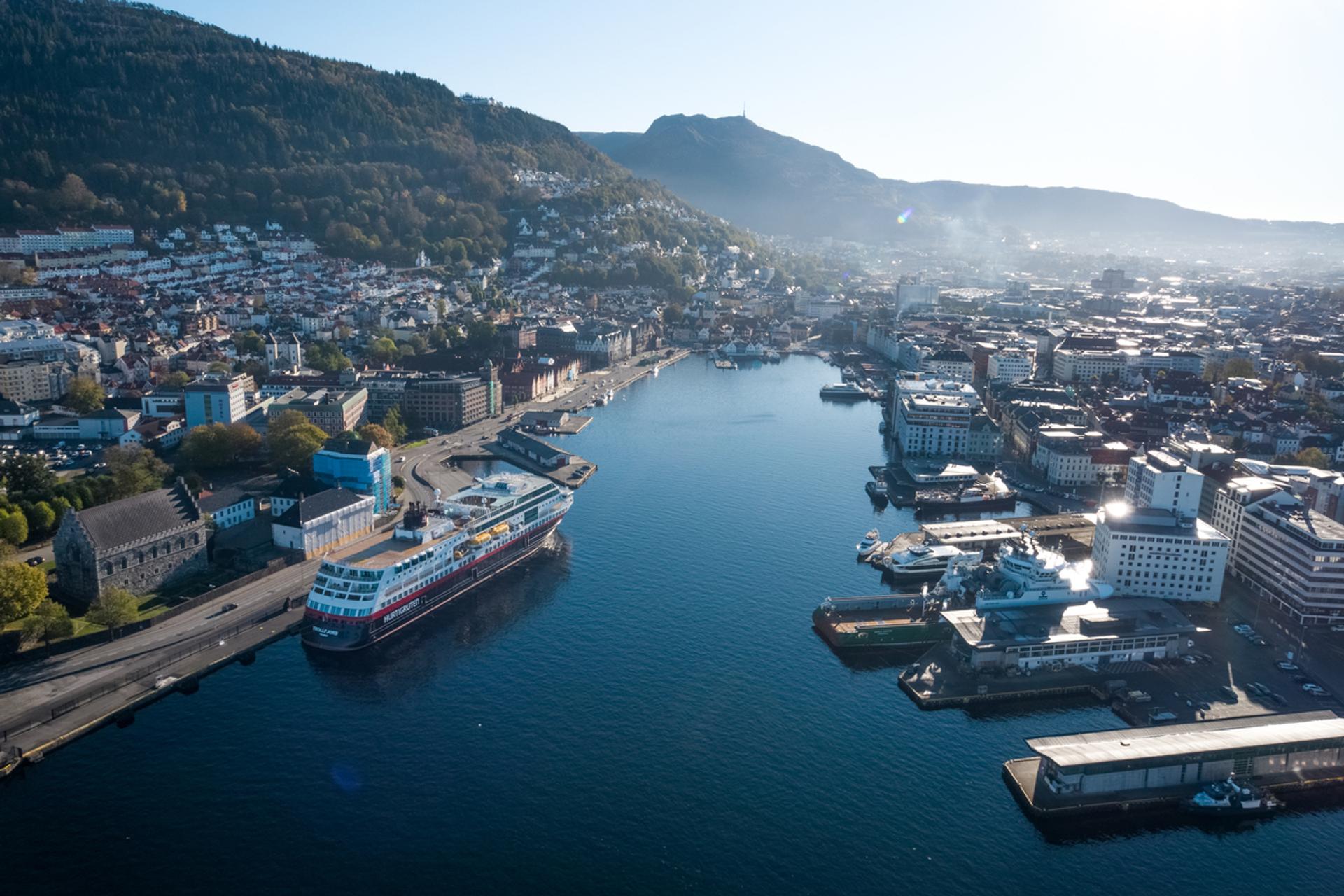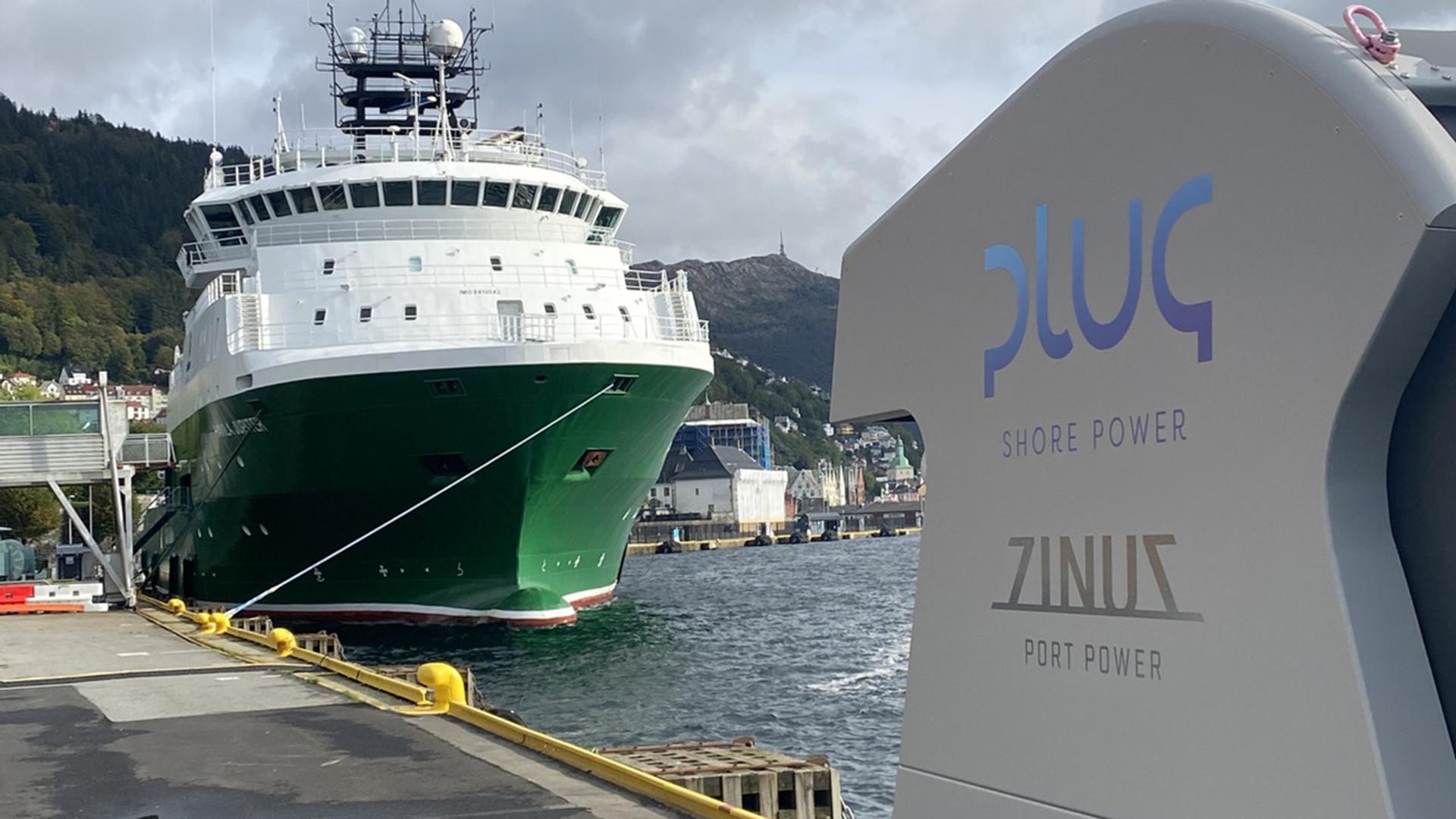Green ports: Bergen aims to be the greenest, smartest port in Europe

"Our ambition is to be the greenest, smartest port in Europe. If you want to make a difference, you have to aim high," says Even Husby, Head of Environment at Port of Bergen.
Bergen is Norway's next-largest city and Western Norway's most important hub for freight and offshore and cruise traffic.
With Europe’s largest shore power facility, steadily more digitised port operations and a new environmental reporting tool, Port of Bergen is giving the shipping industry a push in the green direction.
Time is of the essence in the struggle against climate change, as CO₂ emissions from international shipping must be reduced by 40 per cent compared with 2008 levels by 2030. Moreover, emissions of nitrogen oxides (NOₓ) and sulphur oxides (SOₓ) are a growing health problem and have to come down. Data from the World Health Organization (WHO) shows that almost all of the global population (99 per cent) breathe air that exceeds WHO guideline limits and contains high levels of pollutants.
This will take more than greener vessels, according to Husby.
"We're on the cusp of a major transformation, with clean energy solutions in every area. Our ports have to be prepared. We have to build infrastructure, provide green incentives and make operations smarter," he says.
“Our ambition is to be the greenest, smartest port in Europe. If you want to make a difference, you have to aim high.”
Even Husby
Head of Environment, Port of Bergen
A smart port with a smart reporting system
The way ships are operated when they are in port has a major impact on their overall environmental footprint. Ports are in a good position to influence this. The problem is that most ports lack the tools to enforce environmental strategies.
Husby explains:
"We receive good technical documentation on the vessels that are arriving, but barely any data on how they are actually operated. To put it bluntly, a ship may have the world's most advanced exhaust gas cleaning system, but we don't know whether they are using this system in port. It's often an economic issue, and experience tells us that cruise operators often prioritise profits over sustainability."
In collaboration with DNV and other Norwegian ports, Port of Bergen therefore led the way in developing the Environmental Port Index (EPI), a reporting tool for ships.
"The reporting system collects a wide range of information on how the ship has been operated while moored in port, with special focus on fuel and energy consumption. This information is analysed and quality assured and the ship is assigned a score from 0 to 100 points. A ship that has had low emissions of CO₂, NOₓ and SOₓ while in port will get a high score, while a ship that has done the bare minimum to meet the authorities' requirements will get a very low score," says Husby.
In this way, ports can help to steer the shipping industry in a greener direction.
"The EPI score provides a basis for green incentives. At Port of Bergen this means that for a ship with a score of around 30, there will be no change in port fees. A ship with a lower score will get a sizable additional fee, while one with a high score will get a reduction in fees. In this way we can change attitudes and behaviour over time," Husby explains.
The first-generation EPI reporting tool was designed for cruise ships, which are responsible for significant emissions of CO₂, SOₓ and NOₓ in port.
"In the first season alone, we saw that the cruise ships in ports that use EPI had a steady increase in their score. In other words, they gradually reduced the amount of pollution they created. This means that our tool works," says Husby.
As of December 2023, 29 ports now use the EPI tool, including the Port of Reykjavík and the Port of Tórshavn. This is in line with Husby's international ambitions.
"The aim is for EPI to become a global, universal port tool. We are working with international partners to tailor the tool for sea freight as well. Until now we have focused on CO₂, NOₓ and SOₓ emissions, but are working on expanding the tool to encompass a broader sustainability scope – for example, by bringing waste treatment into the calculation."

Exporting shore-to-ship power solutions
Not only does Port of Bergen want to make green operations more lucrative, it also wants to make them easier. The port has therefore built a world-leading shore power facility so cruise ships no longer need to run their engines to generate electricity while in port.
"Depending on how you measure it, we can say that this is Europe’s largest shore power facility, with a capacity of 48 Megavolt-Amperes," says Maria Bos, CEO at Plug.
Plug owns and operates all the shore power installations at Port of Bergen. When work on the cruise installations began, Bergen already had good shore power facilities for offshore vessels. Connecting cruise ships to shore power provides environmental benefits at a whole other level, Bos points out.
Shore power from Plug has a Guarantee of Origin (GoO) and is 100 per cent renewable. This ensures that power comes from renewable energy sources like hydro and wind power.
"We firmly believe that the market for shore power will continue to grow, and not just in the cruise industry. Even if shipping vessels are eventually fuelled entirely by hydrogen or ammonia, shore power will be a cost-effective alternative when they are in port."

Shore power system
Plug emerged from a collaboration between Port of Bergen and BKK, a Norwegian grid company and provider of energy solutions. Bos thinks it was a wise decision to spin off the shore power activities into a separate company. Plug is now well positioned to export its shore power technology.
"We’re involved in several projects at Norwegian ports and receive many international enquiries. Installing shore power is a demanding process and a major investment, and we’ve reached the point that we can reuse our experience and expertise in new ports."
"We have an articulated goal of exporting our solution and we are in dialogue with international ports."
She gives Port of Bergen credit for helping the development of shore power solutions to gather speed in recent years.
"Shore power would have been in a much weaker position if Bergen weren’t a pioneer in implementing all types of environmental technology. In the beginning, not everyone was equally positive, but now we’ve shown that it works."
“We have an articulated goal of exporting our solution and we are in dialogue with international ports.”
Even Husby
Head of Environment, Port of Bergen
A zero-emission smart port
Investing in digitalisation and autonomous solutions for smart port operations. In parallel with its activities targeting the cruise industry, Port of Bergen is working to make port operations smarter, more efficient and more environment-friendly.
"We are building an entirely new freight terminal at Ågotnes. This will free up space in the city centre for urban development and at the same time give us the opportunity to build the world’s greenest freight terminal. This will allow us to become a zero-emission port," says Husby.
And continues:
"We are, for instance, investing in an entirely digital port operations control centre that can optimise the flow of ship traffic in and out of the port, preventing queues, downtime and emissions.
We are also looking for solutions for autonomous, zero-emission container transport, not unlike the Yara Birkeland project. Port of Bergen is collaborating closely on these solutions with Maritime Cleantech, one of the world's leading business clusters for smart, sustainable maritime technology."
"Port of Bergen is a trendsetter for other Norwegian ports, and we have garnered a good deal of international recognition. In this way we can play a role in promoting the global green transition," concludes Husby.
